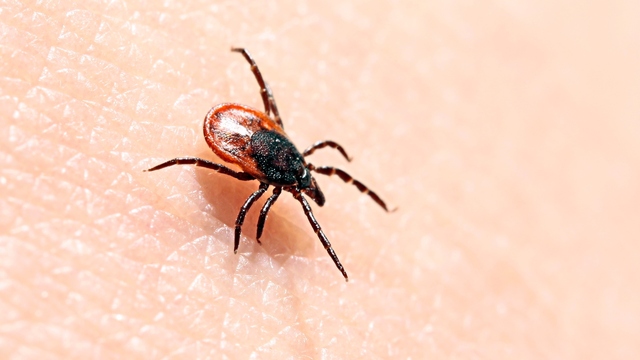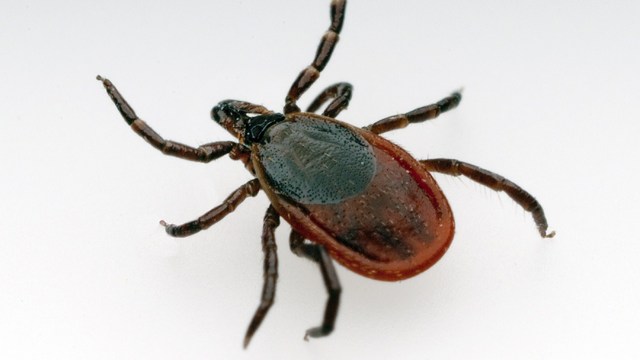Lyme disease is the most common tick-caused disease in the United States. Blacklegged ticks spread it across most of the country. The tick bites an infected mouse, squirrel, or other small mammal and picks up the bacteria. When the tick bites a person, the bacteria can enter the wound.
The first sign of Lyme disease is usually a rash shaped like a bulls-eye (as on a dart board) but sometimes this sign is missed, particularly if the tick bite is under hair or on a part of the body that is hard to see. The rash can grow to 12 inches in diameter. It is not normally painful, but may feel warm.
Symptoms progress to flu-like symptoms, with fever, chills, headache, fatigue, and body aches along with swollen lymph nodes. If the disease isn’t treated, most people will have intermittent arthritis with joint swelling. Sometimes this is mistakenly diagnosed as rheumatoid arthritis.
If Lyme disease is recognized, it can be treated easily with antibiotics. But the symptoms can be vague and if you don’t realize a tick has bitten you, your health care provider may think you have a virus. It is thought the symptoms of chronic Lyme disease are caused by an over zealous response by the immune system.
Untreated Lyme disease can cause neurological problems that can become permanent. Temporary symptoms include Bell’s palsy, meningitis and shooting nerve pain that wakes you out of a sound sleep. As the infection continues, neurological symptoms become chronic, with numbness and tingling, and shooting pains in the hands and feet. This is often accompanied by severe fatigue, sleep dysfunction and cognitive deficits such as memory problems and difficulty concentrating.
Lyme encephalopathy is the most common late stage neurological problem related to Lyme disease. Patients suffer from symptoms related to mild encephalitis. These symptoms include difficulties with concentration, sleep disturbance, moodiness, memory and attention dysfunction.
Most people will fully recover from Lyme disease. The prime time for contracting the disease is late spring and early summer. Prevention is pretty simple; wear long pants and sleeves when walking through areas that may harbor ticks, such as tall grass. Use tick repellent spray. Check yourself for ticks when you get home, and remove them immediately if you find any. If you begin to see the bulls-eye rash or show signs of illness, notify your health care provider so you can be tested and treated with antibiotics.
Sources:
http://med.brown.edu/neurology/articles/sr21608.pdf
http://www.niaid.nih.gov/topics/lymedisease/understanding/Pages/intro.aspx
http://wbztv.com/wireapnewsme/Warm.weather.blamed.2.1610432.html
http://www.cdc.gov/ncidod/dvbid/lyme/ld_statistics.htm





Add a CommentComments
There are no comments yet. Be the first one and get the conversation started!